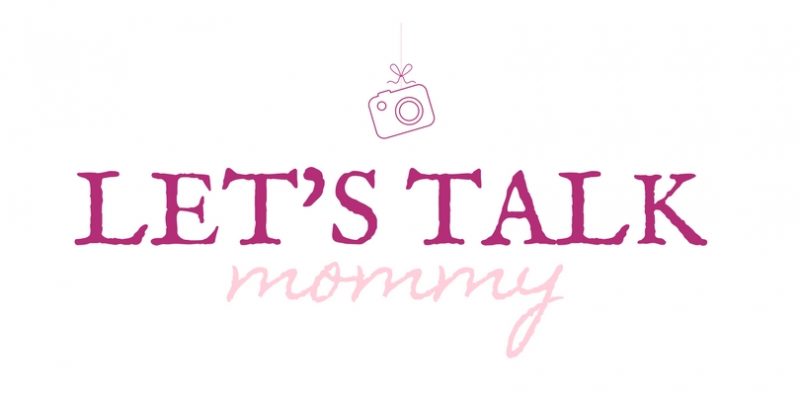Imagine a world where healthcare is not just reactive but proactive, where waiting rooms are a thing of the past, and where your doctor knows you better than you know yourself. Sounds like science fiction, right? Well, the future of healthcare is already here, and it’s being shaped by technology in ways that are both awe-inspiring and deeply human. From artificial intelligence to wearable devices, the way we think about health and wellness is undergoing a seismic shift. Let’s dive into how technology is revolutionizing patient care—and why this is the most exciting time to be alive in the history of medicine.

Via Pixabay
The End of One-Size-Fits-All Medicine
For decades, healthcare has followed a one-size-fits-all approach. You go to the doctor, describe your symptoms, and get a prescription or treatment plan that’s pretty much the same as what everyone else with similar symptoms gets. But here’s the thing: we’re all unique. Our bodies, lifestyles, and genetic makeup are different, so why should our healthcare be the same?
Enter precision medicine. Due to massive advances in genomics, AI, and data analytics, doctors can personalize treatment for individual patients. This is what an early experience of a not-too-distant future might look like. Genetic testing can reveal your susceptibility to some diseases, and AI algorithms can analyze your lifestyle data to prescribe customized interventions to prevent them. It’s like a health care plan that’s your own personal fingerprint.
Wearables: Your Health, On Your Wrist
Remember when fitness trackers were just fancy pedometers? Those days are long gone. Today’s wearables are like having a mini-doctor on your wrist. They can monitor your heart rate, track your sleep patterns, measure your blood oxygen levels, and even detect irregular heart rhythms. Some devices can now measure glucose levels non-invasively, a game-changer for diabetics
But it’s not just about collecting data—it’s about what we do with it. These devices sync with apps that provide actionable insights. For example, if your wearable detects that you’re not getting enough deep sleep, it might suggest changes to your bedtime routine or even recommend a consultation with a sleep specialist. It’s healthcare that’s always on, always connected, and always looking out for you.
Telemedicine: Healthcare Without Borders
The pandemic fast-tracked the adoption of telemedicine, but that is only the start. Virtual consultations are not just a stopgap; they are growing into a pillar of modern health care. Why? Because they’re more convenient and accessible and often just as effective as in-person visits.
Imagine never having to sit in traffic to get to an appointment, never having to be in a waiting room with coughing strangers, never having to take time off work. And with telemedicine, you can see a specialist on the other side of the world without leaving your couch. And it’s not just for minor ailments — telemedicine is being deployed for everything from mental health counselling to follow-ups after surgery.
Enter your virtual healthcare option—My Mountain Mover. The key to prevention is a combination of technology and human interaction. It’s not simply a service; it’s a transformation in how we receive care.
AI: The Doctor’s New Best Friend
Artificial intelligence is often portrayed as a threat to jobs, but in healthcare, it’s more like a supercharged assistant. AI can analyze vast amounts of data in seconds, spotting patterns that would take humans years to uncover. For example, AI algorithms are being used to detect early signs of diseases like cancer in medical images, often with greater accuracy than human radiologists.
But AI’s potential goes beyond diagnostics. It’s also being used to streamline administrative tasks, like scheduling appointments and managing patient records, freeing up doctors to focus on what they do best: caring for patients. And let’s not forget about chatbots—AI-powered virtual assistants that can answer your health questions, remind you to take your medication, and even provide mental health support.
Virtual Reality: Healing Through Immersion
Virtual reality (VR) might seem like something out of a video game, but it’s making waves in healthcare. For patients with chronic pain, VR can provide immersive experiences that distract the brain and reduce discomfort. For those undergoing physical therapy, VR can make exercises more engaging and effective.
However, perhaps the most exciting application of VR is in mental health. Imagine putting on a headset and being transported to a serene beach or a tranquil forest. For patients with anxiety, PTSD, or phobias, VR can create safe environments for exposure therapy, helping them confront and overcome their fears. It’s a powerful reminder that healing isn’t just about the body—it’s about the mind, too.

Via Pixabay
3D Printing: Custom Solutions for Unique Problems
As 3D printing is being customized and widely used, it’s another tech transforming healthcare. From bionic arms to tooth implants, the technology also turns out custom-made solutions that perfectly fit and harmonize with the body. But it doesn’t stop there. Another is the possible 3D organs, meaning their bodies contain organs for which we will not have to wait for organ donors.
Imagine if you were a patient who needed a kidney transplant but would not have to wait for a donor — a new kidney could be printed instead, using their own cells to reduce the rejection risk. It’s a grand vision — but one growing ever more feasible through bioprinting innovation.
The Rise of the Empowered Patient
One of the most profound changes brought about by technology is the shift in power from healthcare providers to patients. In the past, patients were passive recipients of care. Today, they’re active participants. With access to their medical records, wearable data, and online resources, patients are more informed and empowered than ever before.
This shift is also changing the doctor-patient relationship. Instead of a top-down approach, healthcare is becoming a collaboration. Patients are encouraged to ask questions, voice their concerns, and take an active role in their treatment plans. It’s a more human approach to healthcare, one that recognizes the importance of trust, communication, and muturecognizes.

Via Pixabay
Challenges and Ethical Considerations
However, with great power comes great responsibility. It is crucial to address the challenges and ethical considerations that arise as technology reshapes the healthcare landscape. Data privacy is a huge concern — how can we guarantee that sensitive health information is safe in a more connected world? There’s also a risk of over-reliance on technology that could lead to a loss of the human touch that’s so invaluable to healing.
We also need to consider accessibility. Even though technology has the ability to democratize health care, there’s a danger that the democratization could widen: who has access to these technologies and who does not? Moving forward, it’s important that we help make sure everyone — regardless of their economic status — has the opportunity to benefit from these innovations.
The Emotional Side of Tech: Healing Hearts, Not Just Bodies
Healthcare isn’t just about treating the body—it’s about caring for the mind and soul, too. And quietly, technology is stepping in to help in ways we might not even notice. Picture an AI app that doesn’t stop at counting your steps but also keeps an eye on your mood. It picks up on the subtle changes: when you’ve been unusually quiet, when your heart races during a meeting, or when your sleep has been off for days. Then, it gently reaches out: “Feeling stressed? How about a quick 5-minute breathing exercise?” It’s like having a friend who sees through the cracks, even when you don’t.
Now imagine virtual support groups, where AI connects people facing similar challenges—be it managing diabetes, grieving a loss, or adjusting to life as a new parent. These spaces aren’t just about sharing tips; they’re about finding community. They remind us that even in our toughest moments, we’re never truly alone. And then there are the empathetic chatbots, designed to do more than just answer questions. They listen, comfort, and offer kind words when you need them most—whether it’s 2 a.m. or when your therapist is out of reach.
We often think of technology as distant and clinical, but in healthcare, it’s turning into something deeply human. It’s not just about mending what’s broken; it’s about nurturing what makes us whole. And maybe that’s the most profound shift of all.
The Future is Bright
The future of healthcare is not just about cutting-edge technology—it’s about people. It’s about empowering patients, supporting healthcare providers, and creating a system that’s more efficient, more effective, and more compassionate. It’s about breaking down barriers and making healthcare accessible to all.
So, what’s in store for the future? Perhaps it’s a world in which diseases are detected before symptoms emerge, where treatments are personalized to your specific biology, and where healthcare is as effortless as calling for a ride or streaming a movie. Perhaps it’s a world in which humanity and technology combine in a new way to produce something magnificent.
One thing’s certain: the future of healthcare doesn’t just lie in disease cures; it also lies in quality of life enhancement.
What do you think? Are you excited about the possibilities, or do you fear technology’s role in health care? From the sounds of it, though, one thing is clear: the future has arrived, and it’s time to embrace it.






